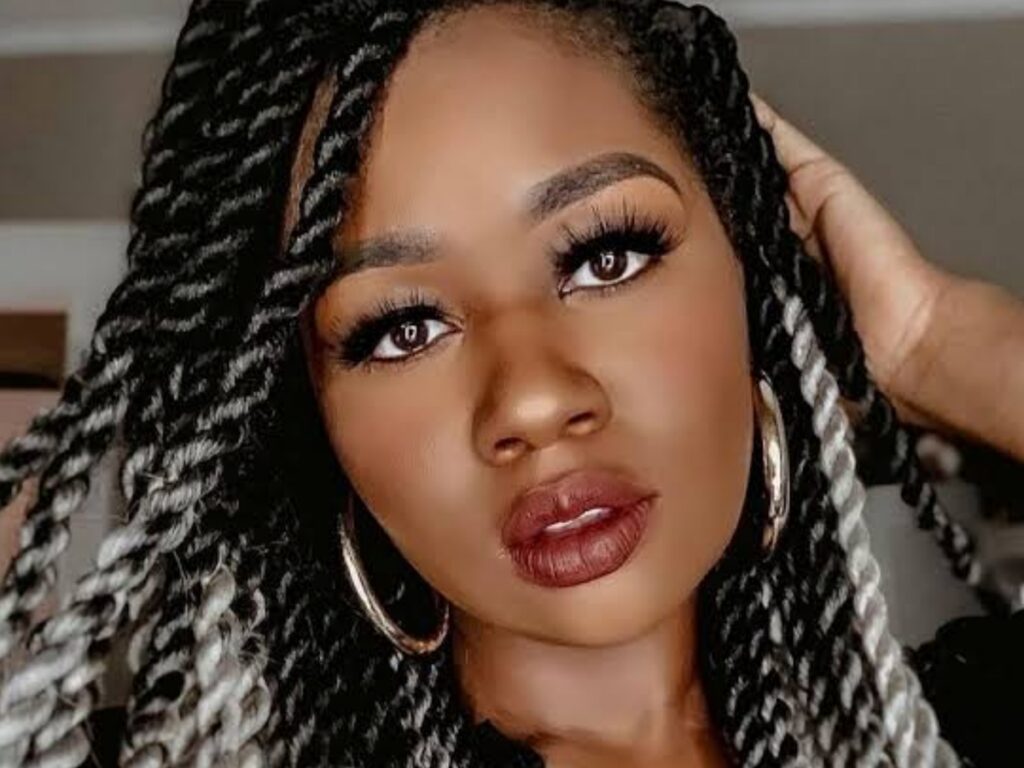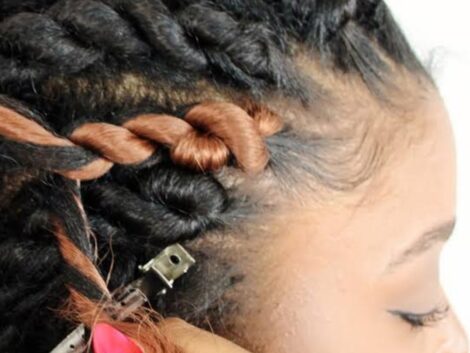Protective hairstyles—Senegalese twists—have been quite trendy these days. The popular protective hairstyle named the Senegalese twist originated from the West African country, Senegal. This style is also called the Senegalese rope twist or rope twist. In this hairstyle, the stylist twists small sections of hair from root to tip and uses synthetic or natural hair extensions to add extra length and volume. Such twisting finally results in a long-lasting, low-maintenance hairstyle that usually lasts multiple weeks. For being both protective and stylish, it has been a popular choice for maximum women of African descent for a long time. Although now, it has spread worldwide, and people from all races and genders are trying it out.
It originated in Senegal and is popular in the entire African continent among both men and women. Plenty of salons offer this style all over the United States as it is quite demanding among their consumers.
Do Senegalese twists grow your hair?
Yes, Senegalese twists can help in promoting hair growth. As it is a protective hairstyle, it protects the hair from environmental damage and minimizes hair breakage at the same time. For such reasons, the hair becomes healthier and may start growing faster. Also, when the entire hair is twisted, it doesn’t get tangled easily or damaged from frequent combing or brushing, resulting in less hair breakage and faster hair growth. Additionally, by keeping the ends of the hair tucked away in the twists, the hairstyle can help prevent split ends from forming, promoting healthy hair growth. However, it is not guaranteed that the Senegalese twist definitely will make your hair grow faster. Because the hair growth rate is determined by various factors, including genetics, diet, and overall health.
So, there is a chance of faster hair growth when the hair is twisted in a Senegalese twist. 
What hair do I need for Senegalese twists?
If you want to get Senegalese twists, synthetic hair extensions that are specifically designed for braiding are needed. Hair extensions used for this are usually soft, smooth, and Marley or kanekalon hair. These hair extensions are available in various colors and lengths, providing multiple options for customizing your twists.
While selecting hair extensions for Senegalese twists, it is a must to choose high-quality hair that is supposed to be gentle on your natural hair and scalp and that will not get tangled easily. You should also remember to choose the right amount of hair for your desired length and thickness of the twists. You should consult a professional hairstylist to help you choose the right hair extensions and properly install your Senegalese twists.
What is the easiest way to do a Senegalese twist?
If you’ve never done twists or are new to braiding, Senegalese twists can be a little difficult to execute at home. Yet, you can master Senegalese twists on your own with time and effort. You can perform Senegalese twists by following the instructions listed below:
- To guarantee that your hair is tidy and tangle-free, wash and condition it first. With a towel or a hairdryer, completely dry your hair.
- Make little parts of your hair, then clip the ones you aren’t working with out of the way.
- Using a braid, secure the synthetic hair extension to the base of a tiny part of your natural hair. Either a two-strand twist or a three-strand braid are options.
- Once the synthetic hair is secured to your natural hair, start twisting the two strands of hair together from the root to the tip. To prevent tension on your scalp, be sure to twist firmly but not too tightly.
- Till you reach the end of the fake hair, keep twisting. To keep the end of the twist in place, use a rubber band or hairband.
- Once you’ve twisted each section of hair, repeat the process.
- Tie your twists up at night with a satin scarf or hat to keep them in place and avoid frizz.
It’s vital to keep in mind that if you have long or thick hair, making Senegalese twists can take many hours. It is preferable to get a professional hairdresser for help if you are unsure of your ability to braid or twist your hair.
Why are my Senegalese twists unravelling?
Senegalese twists can occasionally unravel for a variety of reasons. Here are a few potential causes of your twists unravelling:
- Untidy twists: If your twists are excessively untidy, they could come undone quickly. To prevent this, make sure to twist firmly but not too firmly since tight twists can result in strain and harm to your natural hair.
- Wrong hair texture: Using the incorrect synthetic hair may prevent the twists from holding properly, leading to their unravelling. Be sure to use synthetic hair of the highest quality that is intended for braiding.
- Friction: Friction from sleeping, wearing hats or scarves, or excessive touching can cause your twists to unravel. Protect your twists with a satin bonnet or scarf at night, and avoid touching or rubbing them excessively.
- Washing: Washing your hair too frequently can cause your twists to unravel. Try to wash your hair no more than once every two weeks, and be gentle when washing your hair to avoid unravelling.
- Using the wrong products: Using heavy oils or products with alcohol can cause your twists to unravel. Use lightweight products that are specifically designed for synthetic hair to maintain your twists.
If, after following these instructions, your twists still come undone, it would be preferable to get a professional stylist to help you correctly install and care for your Senegalese twists.
How long do Senegalese twist braids last?
The lifespan of Senegalese twist braids depends on several factors, including the quality of hair extensions used, the level of maintenance, and the type of activities you engage in while wearing the braids. Generally, Senegalese twist braids can last anywhere from 4–8 weeks with proper care and maintenance.
To extend the lifespan of your Senegalese twist braids, you can follow these tips:
- Keep your scalp clean: Regularly wash your scalp and hair with a mild shampoo and conditioner to remove dirt and buildup that can weigh down your hair and make it frizzy.
- Moisturise your hair: Use a leave-in conditioner or natural oils like coconut or jojoba oil to keep your hair moisturised and prevent it from drying out.
- Wear a silk or satin scarf or bonnet when sleeping: This will help to reduce friction and prevent your braids from getting tangled or frizzy.
- Avoid excessive heat: Avoid using hot tools like blow dryers, flat irons, or curling irons, as they can damage your braids and cause them to unravel.
- Keep your braids neat: To keep your braids looking good and to keep them from getting frizzy or tangled, retwist the loose hair around the roots of your braids on a regular basis.
- Use a cap or scarf: Use a cap Scarf
When you’re outside in windy or wet conditions to protect your braids from the elements and keep them from being tangled or damaged, use a cap scarf.
By adhering to these recommendations, you may help your Senegalese twist braids last longer, up to 12 weeks and maintain their gorgeous appearance.
Lastly, check out the mane caper shop.




